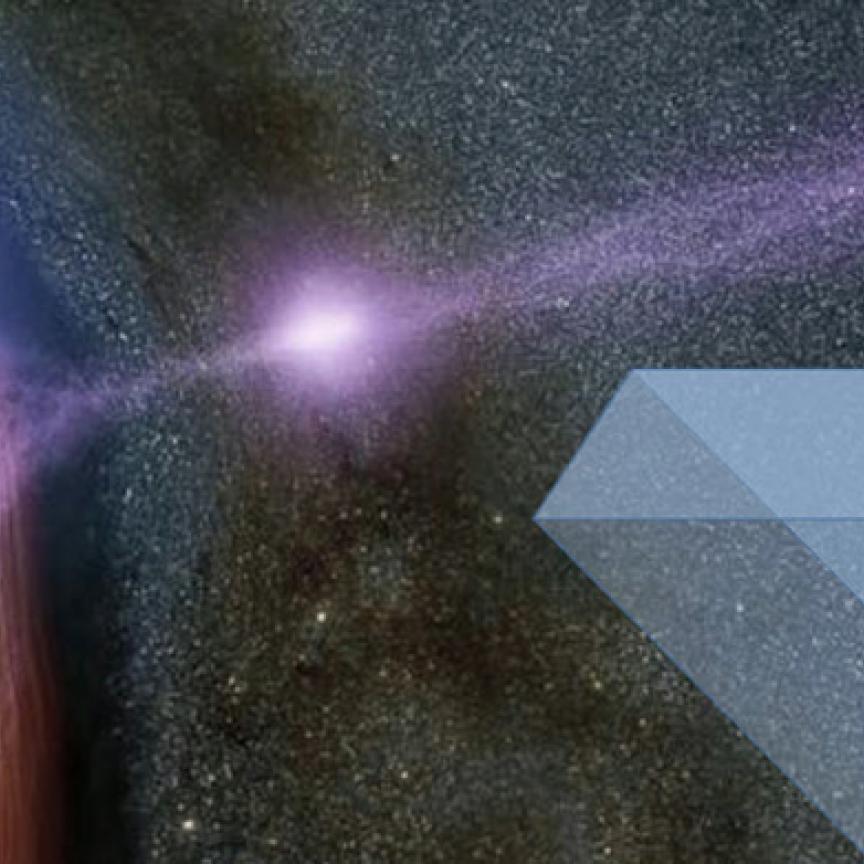From near to far, natural phenomenon to nebulae, moons to multispectral, the winners of The Royal Observatory Greenwich’s Astronomy Photographer of the Year 2024 competition is here.
The Astronomy Photographer of the Year is an annual competition run by The Royal Observatory Greenwich, and includes a subsequent exhibition to showcase the winners and shortlisted entries at the National Maritime Museum, featuring over 100 images displayed on lightbox screens.
The competition includes a total of 11 subject categories including stars, moons, planets and galaxies. You need not look too far to unearth a winner, however, with horizon-hogging skyscapes and aurorae also given their own categories.
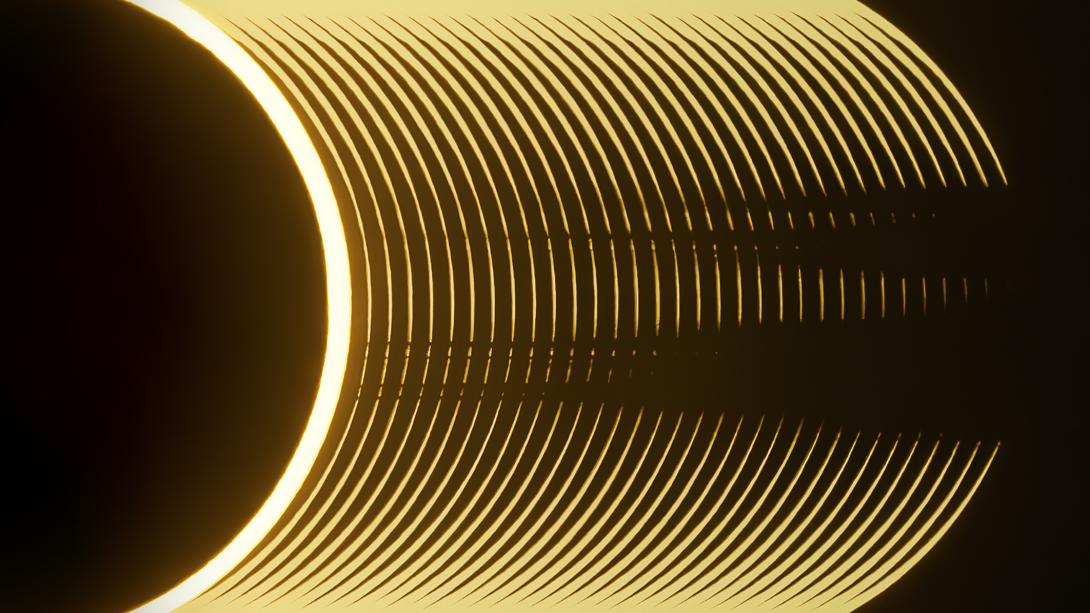
Distorted Shadows of the Moon’s Surface Created by an Annular Eclipse. Image: Ryan Imperio (USA)
Overall Winner
Ryan Imperio took home the competition’s top prize this year. Taken from the ‘Our Sun’ category, Imperio’s image, ‘Distorted Shadows of the Moon’s Surface Created by an Annular Eclipse’, is a composite of more than 30 separate photographs of the Sun, taken during the annular solar eclipse in October 2023.
The solar eclipse images capture the blink-and-you-miss-it optical illusion ‘Baily’s beads’, which highlights the moon’s topography when sunlight shines through the valleys and craters at its surface edge.
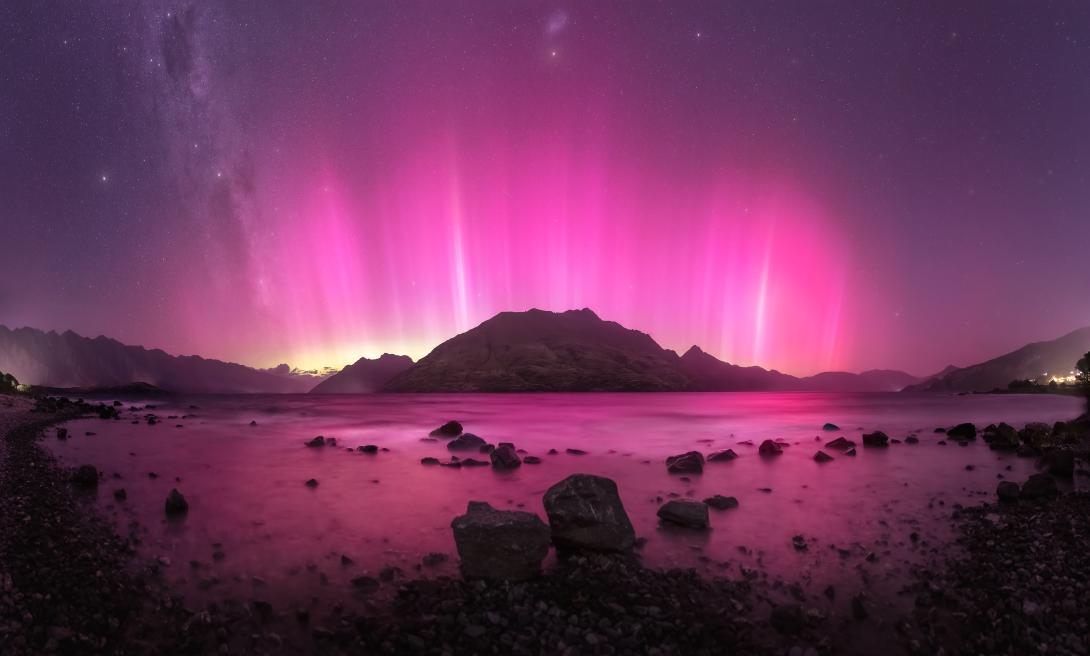
Queenstown Aurora. Image: Larryn Rae (New Zealand)
From ophthalmology to astronomy
Imperio, a professional ophthalmic photographer, started his journey into astronomy photography with just a smartphone, but quickly expanded his photographic range. “When I found out a ‘ring of fire’ annular eclipse was going to pass through the US, I knew it was an opportunity,” said Imperio.
“This is an impressive dissection of the fleeting few seconds during the visibility of the Baily’s beads. This image left me captivated and amazed. It’s exceptional work deserving of high recognition,” said competition judge Kerry-Ann Lecky Hepburn.
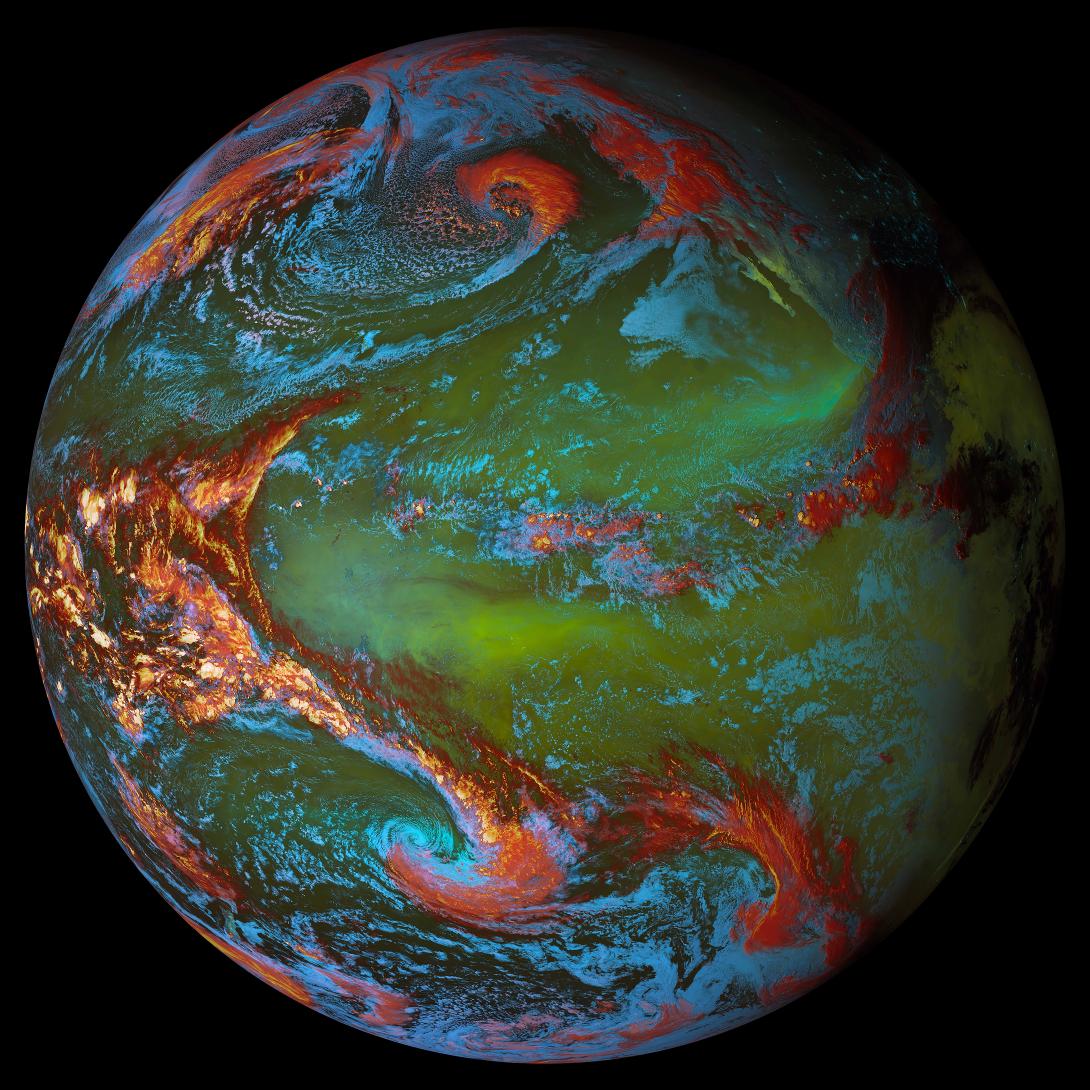
Anatomy of a Habitable Planet. Image: Sergio Díaz Ruiz (Spain)
Photographic innovation
The Annie Maunder Prize for Image Innovation went to Sergio Díaz Ruiz‘s shot entitled ‘Anatomy of a Habitable Planet’. “This seemingly alien world is actually our endangered planet, as a distant civilisation might study it,” said Díaz Ruiz. The image was created by combining the 16 wavelength channels from the GOES-18 weather satellite that measures energy at different points on the electromagnetic spectrum.
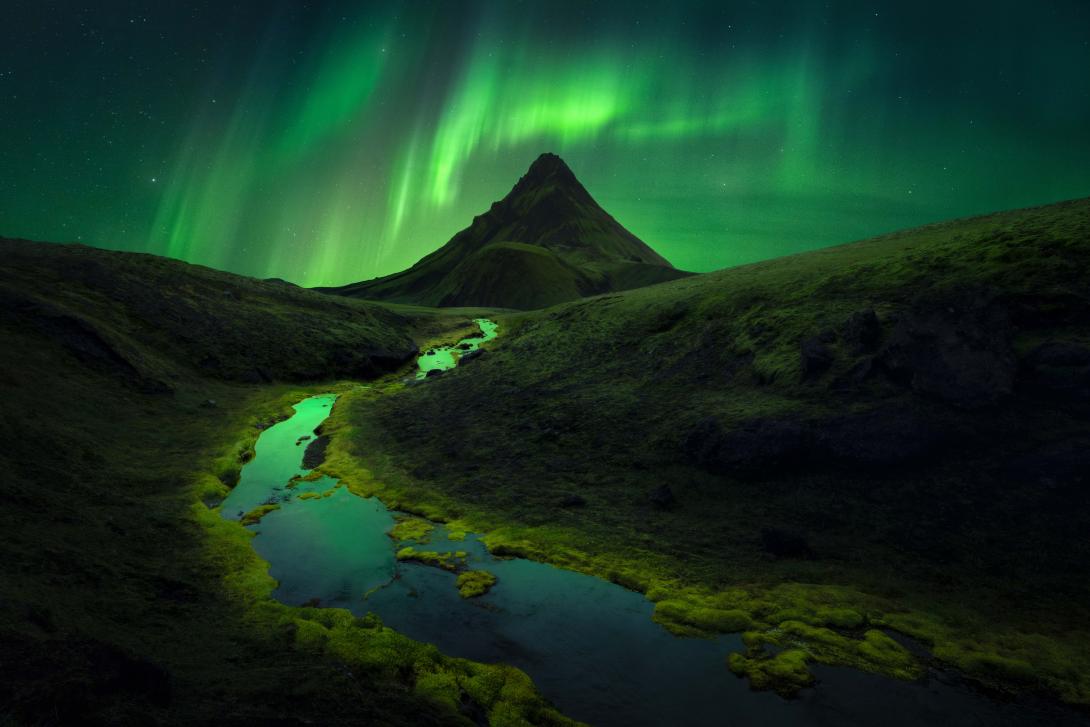
The Green Kingdom. Image: Filip Hrebenda (Slovakia)
“This strangely familiar representation of the Earth transforms scientific data through colour mapping to highlight the devastation already inflicted on our world. The image poignantly emphasises the significant environmental challenges we face and the urgent need to protect and preserve our planet,” commented competition judge Victoria Lane.

On Approach. Image: Tom Williams (UK)
Other winners
Elsewhere in the competition, Tom Williams showed different phases of Venus on its “approach to inferior conjunction (when Venus and Earth appear close on the same side of the Sun,” said Williams, in his winning image ‘On Approach’.
Williams used ultraviolet and infrared filters to reveal the intricate cloud structure within the planet’s upper atmosphere. “Venus shares very little with Earth-bound observers. Its highly reflective clouds show no detail when using conventional imaging methods,” said competition judge Steve Marsh. “Although the colours used are false, they are not too far from the natural colour of the planet. The thoughtful compositional work in the accurate scaling of the three phases is just the icing on the cake.”

High-Tech Silhouette. Image: Tom Williams (UK)
Williams also took home the gong in the People and Space category for his shot 'High-Tech Silhouette', an H-alpha image of the Sun which features a silhouette of the International Space Station during its 0.2-second journey through the camera's field of view.
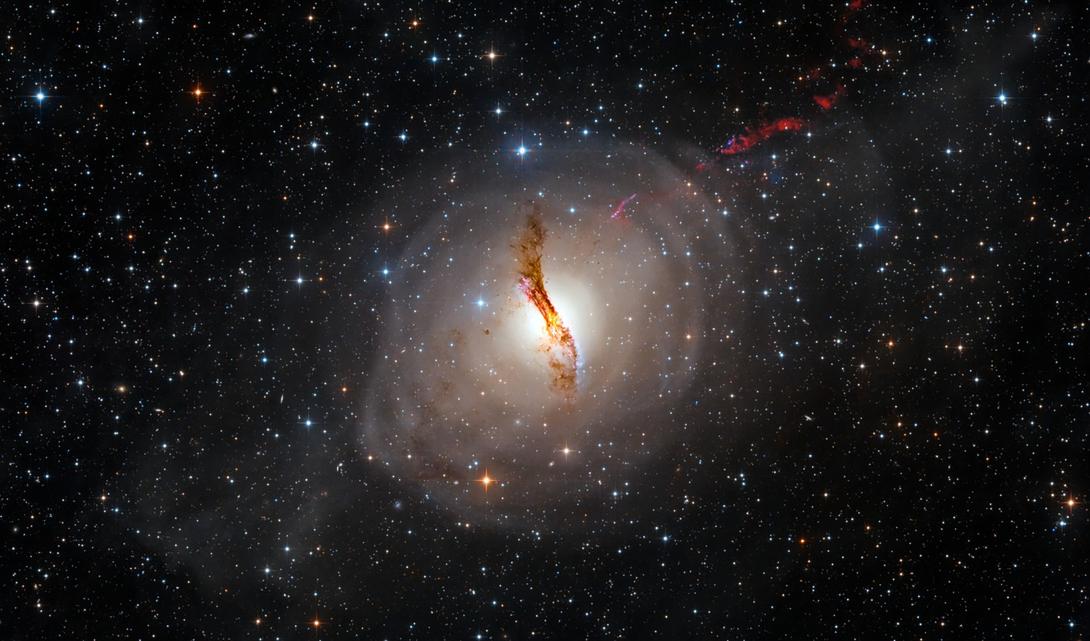
Echoes of the Past. Image: Bence Tóth, Péter Feltóti (Hungary)
In the Galaxies category, Bence Tóth and Péter Feltóti ’s ‘Echoes of the Past’ used hydrogen narrowband data in parallel with two astrophotography setups to capture galaxy NGC 5128 and its surrounding tidal wave system, as well as a visualisation of the relativistic jet, then processed the winning image from the data.
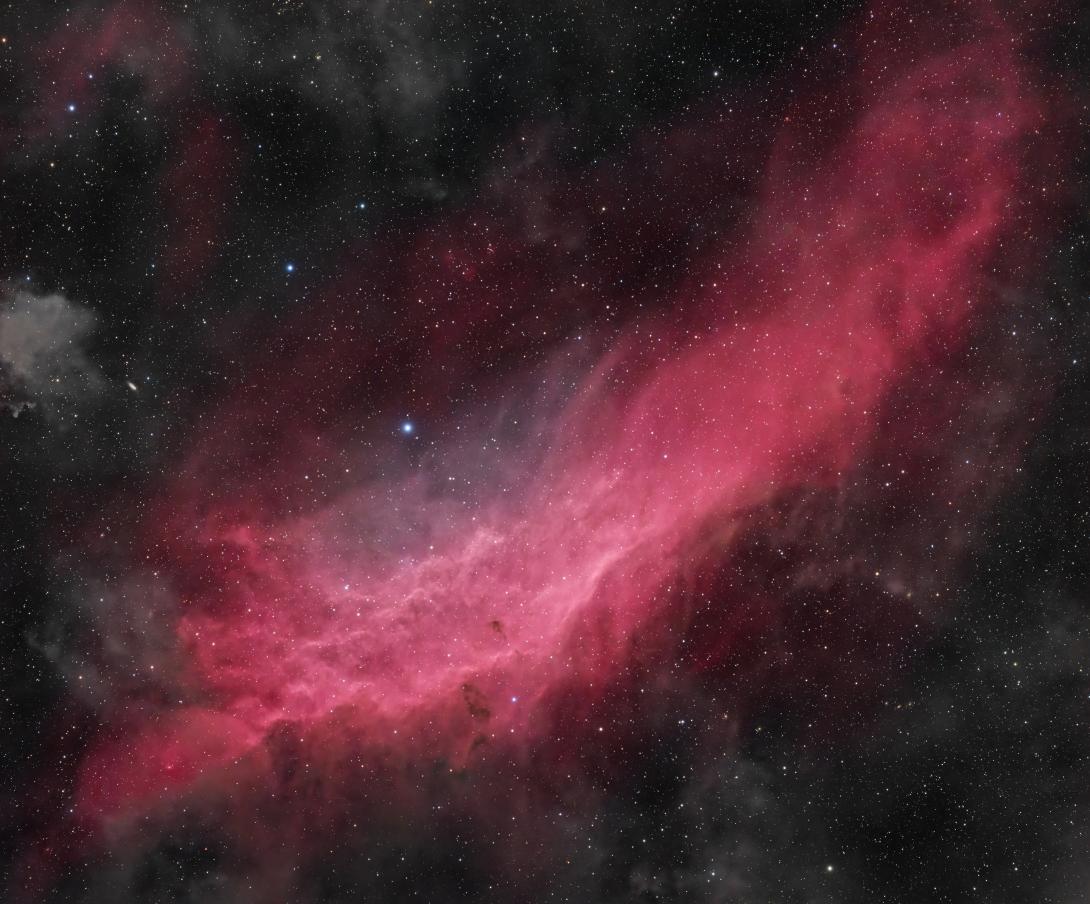
NGC 1499, A Dusty California. Image: Daniele Borsari (Italy), aged 14
Age no barrier to astronomy photography
In the Young Competition, in which entrants must be aged 15 or under on the entry closing date, Daniele Borsari (aged 14) was chosen for ‘NGC 1499, a Dusty California’, explaining: “Background dust was captured with just a UV/IR Cut filter and emission nebulae with the Optolong L-eNhance narrowband filter. Later in the processing I combined the broadband and narrowband data, which made a big difference, especially in showing weaker emissions of hydrogen.”
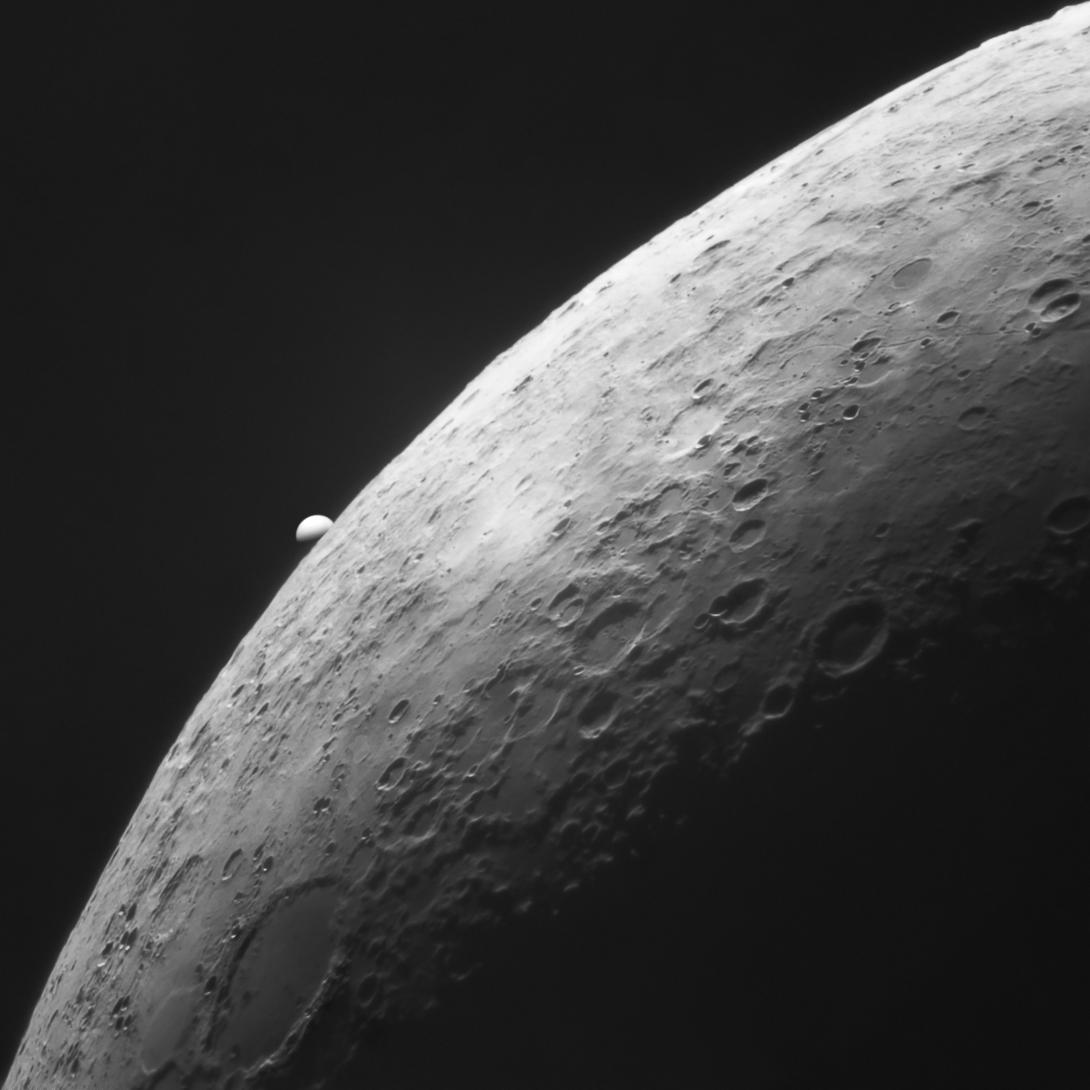
Venus and the Moon in Infrared. Image: Lóránd Fényes (Hungary)
All the competition’s winning and shortlisted images will be on display at a free exhibition at the National Maritime Museum in Greenwich, London, from 12 September 2024 until summer 2025.


